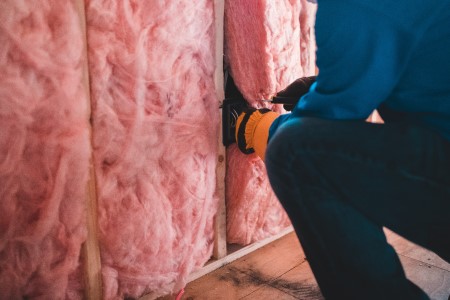
Student accommodation is a popular option for property investors looking for rental opportunities. But how do you get started? We tell you everything you need to know to invest in student accommodation.
Generally, there are two main types of accommodation landlords can invest into: houses in multiple occupation (HMOs) or purpose-built accommodation.
Large properties are used for HMOs, where they’re tweaked to turn former reception or office rooms into bedrooms. In HMOs, students share bathroom and kitchen facilities. These are considered the “traditional” house share for those in higher education.
Purpose-built accommodation can include properties with en-suite rooms, self-contained “pods”, or individual flats. They’re often found in city-centres and may have certain amenities while being close to the university in question.
In-person lectures were put on the back-foot during the pandemic and as such, some began to question whether there’s much demand for student accommodation at all. However, as the world continues to open, there’s plenty of evidence students can’t wait to get back to their lecture halls. Investors could potentially benefit greatly if they get in ahead of the next academic year.
Source: Mortgage Advice Bureau
Investors may wonder how to invest in student accommodation, but is it actually a good idea?
Demand from students themselves is rising. University applications from 18-year-olds have reached their highest level in nearly a decade, according to research from UCAS and UniHomes. Applications for the coming year are 4% higher than last year, while being a 14% increase on 2020. As more students’ flock to university, they’ll need somewhere to stay.
This specific section of the rental market could be substantial too. In 2020/21, there were 2.66 million students at UK higher education institutions. Additionally, 88% of students end up living in student accommodation, according to the National Student Accommodation Survey.
While some landlords may be hesitant to rent to students, they can actually provide high levels of security. Students tend to sign 12-month leases. They also often have parents who act as their guarantors. This means landlords can confidently manage their property based on the academic year.
There also may never have been a better time to invest in property for students, given legislative changes from the Government to encourage investment. Planning laws were updated in 2015 allowing for some commercial buildings to be converted into residential units without the need for planning permission. More recently, the Help to Build Equity Loan scheme was launched, providing Government-backed support to cover building costs. This support can be used to convert commercial property into residential assets.
The state appears to recognise the UK faces a dearth of residential options and investors could take advantage of this.
Source: Property Reporter, House of Commons Library, RW, Gov.uk
Best place to invest in student accommodation
When it comes to where to invest, a few obvious places will pop up. Cities with large student populations will come to mind for those asking themselves how to invest in student accommodation. London, Manchester, Birmingham and Nottingham are good places to start.
However, a few specific areas have emerged to present investors with potentially lucrative opportunities. The cost-of-living crisis has forced many students to seek out cheaper locations, with the East Midlands seeing its highest rates of applications since 2014. The Northeast has also seen a significant increase, the highest recorded since 2016.
Northern universities are benefiting from students wanting to cut their costs. Savvy investors may be able to benefit from this.
Source: Property Reporter
Working out how to invest in student accommodation is easy, but finding decent yields is hard
Yields for UK purpose-built student accommodation tightened in 2021 according to Savills, ranging between 3.5 and 5% in prime locations. However, last year finished on a strong footing and investor demand remains high. Its latest analysis finds that, “sharper yields is the market trajectory”.
HMOs can also provide investors with particularly attractive yields. At the end of last year, HMOs generated an average yield of 7.5%, while individual flats averaged 5.4%.
Where buyers are willing to invest in the utmost prime locations, yields could be much higher. Luxury student flats in central London can be rented out for around £15,000 a month.
Source: Buy Association, Savills – UK Purpose-Built Student Accommodation – Q4 2021, Savills – UK Student Accommodation – Q1 2022, Metro
Are there any cons to investing in student accommodations?
While there may be plenty of demand for student accommodation, along with strong return potential, there are a few drawbacks investors will need to factor in.
Finding tenants will likely be relatively easy, but investors will need to look for new ones every year or two. Additionally, properties may end up unoccupied in the summer months as students go on holiday or return home. This could cut rental income, at least for a few months.
Additionally, HMOs will be subject to stricter regulation than ordinary buy-to-let properties. For example, fire doors will ned to be installed and maintenance costs are also likely to be high. Specific licences may also be needed from local councils.
The tenants themselves could also prove costly. Investors may end up with tee-total renters who do nothing but study and are asleep by 9pm. But, there’s a strong chance they’ll also be opening up their properties to party animals who have zero chance of getting their deposits back! Student landlords may want to set money aside for repairs and refurbs. In the worst-case scenario, instead of asking how to invest in student accommodation, investors may wonder why they thought it was good idea at all!
Overall though, student accommodation could be a sensible edition to any property portfolio. After two years of video lectures and a lack of fresher’s weeks, students are probably gagging to make up for lost time. Landlords who can accommodate those seeking out the “real” university experience are likely to do very well.
Disclaimer
MFS are a bridging loan and buy-to-let mortgage provider, not financial advisors. Therefore, Investors are encouraged to seek professional advice.










